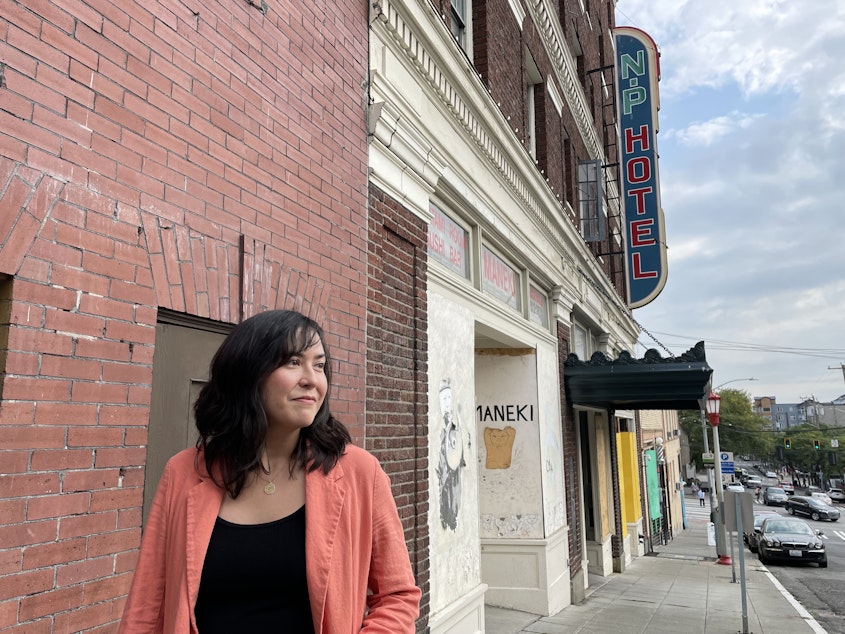The untold history of migrant labor in the Pacific Northwest

Author and historian Megan Asaka tells the story of early migrant laborers in her book Seattle from the Margins: Exclusion, Erasure, and the Making of a Pacific Coast City.
In Seattle's Chinatown International District, a block north of Jackson, sits a multi story brick building with a marquee that reads "NP Hotel."
This is the Northern Pacific Hotel, which was referred to as a first class hotel when it was built in 1914.
"It was one of the many hotels that would open in this area between the late 19th and early 20th century period," says Megan Asaka, a professor of history at UC Riverside. "Seattle actually had among the highest concentrations of hotel rooms and other forms of short term housing in the entire country by 1920."
Asaka says Seattle built a lot of hotels at the turn of the 20th century because the city's workforce needed them.
Seattle developed around seasonal industries and extracting natural resources. These early laborers were often indigenous or Asian immigrants.
Sponsored
They worked in sawmills, canneries, and on farms, industries that required a highly mobile workforce laborers needed to move between jobs often not staying long in the same location.
Hotels like the NP were vital for housing those workers and most of those hotels were operated by Japanese immigrants.
"Japanese immigrants by, I think, the 1920s operated one quarter of all the hotels in the city, even though they were just a tiny percentage of the urban population," Asaka said. "So they were very over represented in this particular occupation."
The NP Hotel shares this dense block with the Panama Hotel. Maneki is also here, it's a famous Japanese restaurant with a long history in the community. In other hotels of the early 20th century, there were barber shops, bathhouses, cafes, and restaurants.
Asaka explains that many immigrants had strong ties to wealthy white business owners because those immigrants could provide and organize labor, but there's also intense racism at the forefront of this story. There were anti-Chinese riots in Seattle. The Chinese Exclusion Act of 1882 banned Chinese laborers from immigrating to the US. During World War II, the US government forcibly removed people of Japanese ancestry from Seattle, and then the rest of the country and incarcerated them.
Sponsored
The city of Seattle had a fraught relationship with its laborers.
"They wanted them as workers to do the labor because no one else would do the work," Asaka said. "And this was true for Chinese, this was true for Native American workers as well. And yet, they didn't really want them here in the city."
Megan Asaka spoke to Soundside about her latest book, Seattle from the Margins: Exclusion, Erasure, and the Making of a Pacific Coast City and the importance of tracking the difficult to uncover histories of early laborers.
Megan Asaka will also be speaking Thursday September 15, 2022 about her book at the Elliot Bay Book Company.






